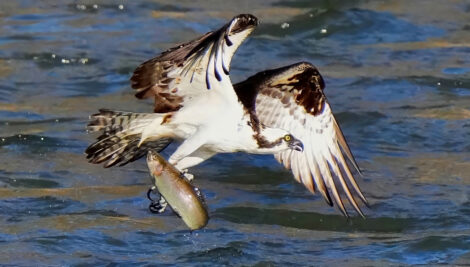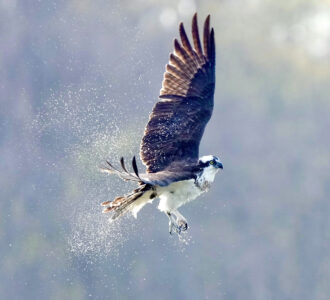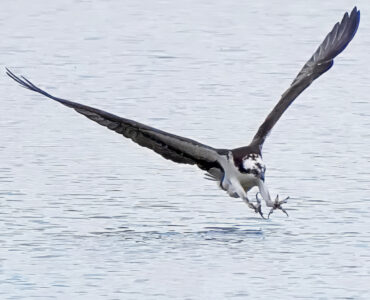Ospreys in Pennsylvania: the return of the fish hawk
- PHOTO PROVIDED An osprey is shown capturing a fish in the river in this photo by Linda Stager.
- PHOTO PROVIDED An osprey is shown flying in this photo by Linda Stager.
- PHOTO PROVIDED An osprey is shown flying in this photo by Linda Stager.
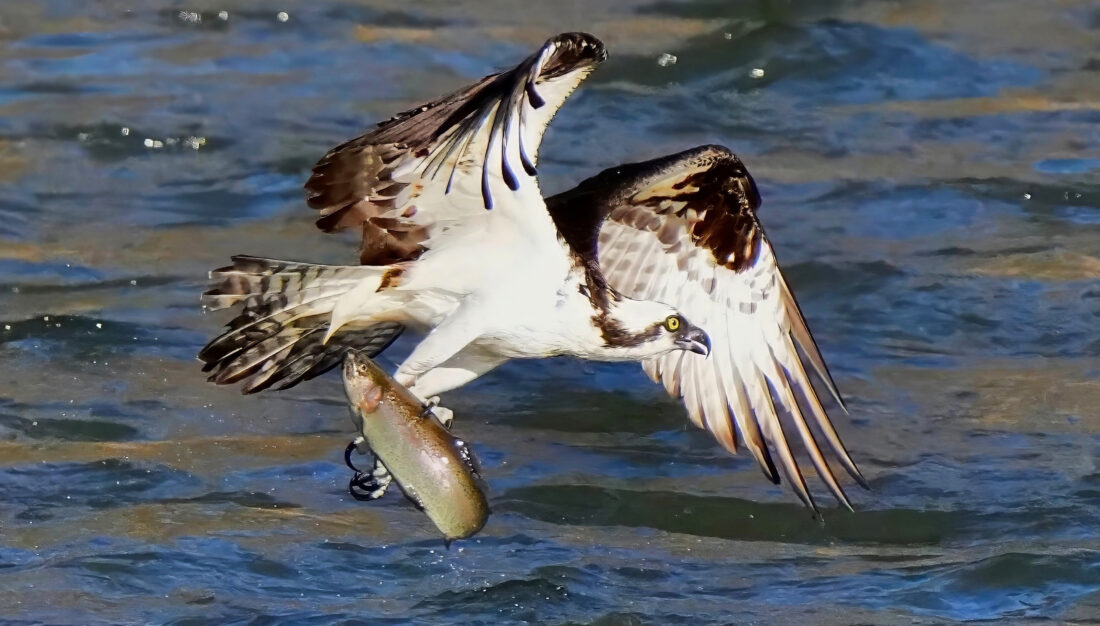
PHOTO PROVIDED An osprey is shown capturing a fish in the river in this photo by Linda Stager.
There’s a moment every spring in Pennsylvania when the skies near rivers and reservoirs fill with a certain kind of excitement. A large bird with a white belly, dark eye stripe and outstretched wings hovers high above the water, then dives with fierce precision talons first into the surface.
A second later, it bursts back into the air with a wriggling fish clutched tightly in its grip. The bird is an osprey and, for many Pennsylvanians, its return is a symbol of resilience and renewal.
Also known as the fish hawk, the osprey is one of the most specialized raptors in North America. Nearly 99% of its diet consists of fish, which it catches using its unique, reversible outer toes and spiny footpads. These adaptations help the osprey grasp slippery prey with surprising strength and agility. Watching one in action is like witnessing the wild at its most elegant and efficient.
Ospreys are migratory birds, spending their winters in Central and South America before returning north to breed. In Tioga County, where I live, they typically arrive right around St. Patrick’s Day and, for me, it’s a yearly tradition to welcome home the birds I track through the season. Historically, osprey nested along the Susquehanna River, the Delaware and in scattered pockets of the Alleghenies and the Poconos.
But by the 1970s, ospreys had almost vanished from the state.
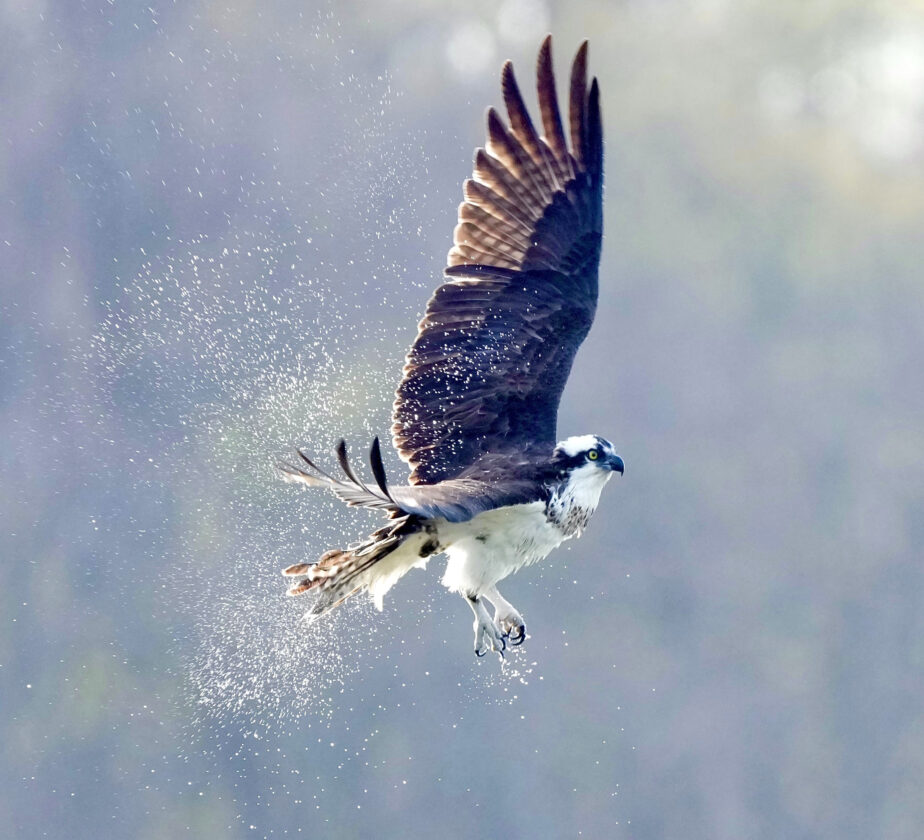
PHOTO PROVIDED An osprey is shown flying in this photo by Linda Stager.
The culprit was DDT, a pesticide that entered waterways and accumulated in fish, the exclusive food source that ospreys depended on. The chemical weakened eggshells, causing them to crack before hatching. By 1986, Pennsylvania had only two known osprey nests.
That’s when conservationists stepped in.
The Pennsylvania Game Commission, along with citizen scientists and volunteers, launched a reintroduction program. Using a method called hacking, 265 young ospreys from healthier populations were raised in artificial nesting platforms without direct human contact, then released into the wild once they were strong enough to fly. Dozens of platforms were installed near reservoirs, wetlands and rivers to encourage the birds to return and nest.
It worked and now ospreys can be found across Pennsylvania.
Some of the most active nesting areas include the Tioga-Hammond Lakes in Tioga County, the Lower Susquehanna River near Harrisburg and the Pymatuning Reservoir in western Pennsylvania. These birds have become a favorite sighting for both birdwatchers and anglers.
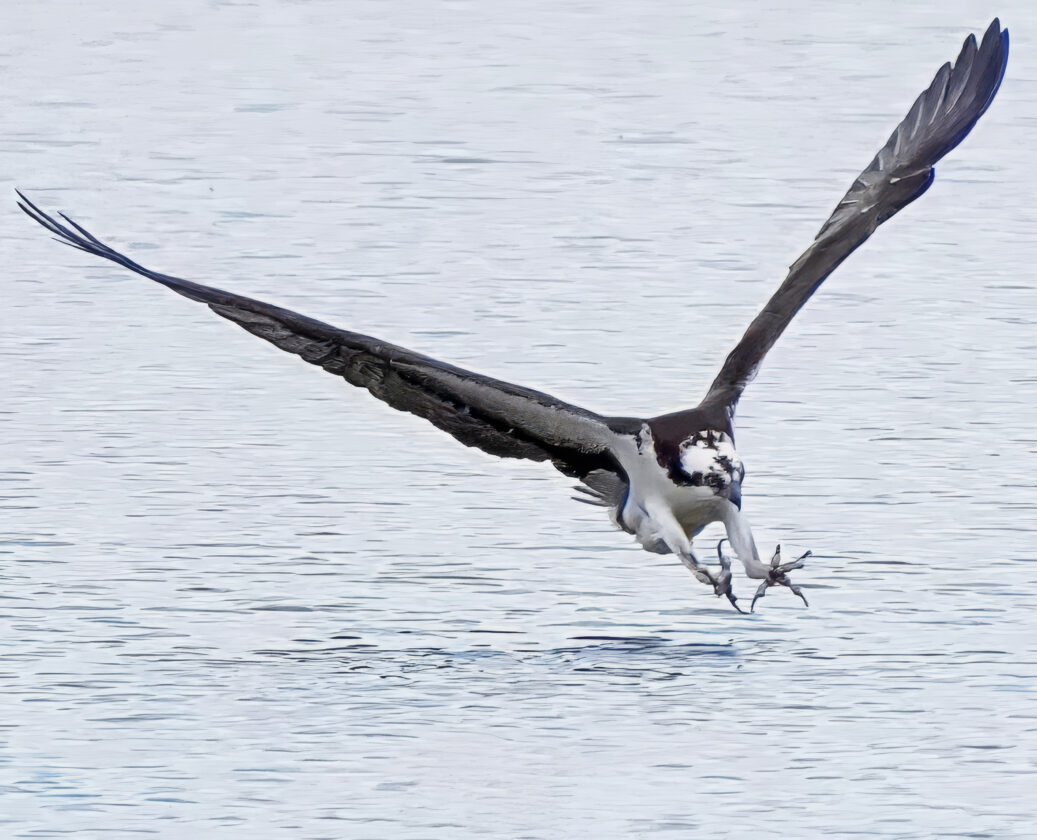
PHOTO PROVIDED An osprey is shown flying in this photo by Linda Stager.
Ospreys are easy to spot once you know what to look for. Their wingspan can stretch up to six feet and in flight, they form a distinctive M shape. Their calls are high-pitched and whistling–sharp cheep-cheep-cheep cries that echo across the water. They often circle above the treetops or perch on dead snags and man-made platforms, scanning the surface for movement.
Their nests are built high and wide, often made from sticks, driftwood and anything else they can find. Each year, a mated pair adds to the nest, sometimes making it several feet deep. Once the eggs are laid, both parents take turns incubating and protecting the nest, fiercely guarding their territory from crows, raccoons and even eagles.
One of the best things about ospreys is their role as ecological storytellers. Because they rely so heavily on fish, they reflect the health of aquatic systems. When ospreys are thriving, it usually means the rivers are clean, the fish are abundant and the ecosystem is in balance. Their presence along Pennsylvania’s waterways tells a hopeful tale of recovery — not just for a species, but for a place.
Still, the story isn’t finished.
Threats remain. Fishing line entanglement is a growing concern and habitat loss from shoreline development can limit nesting space. Climate change too may alter migratory patterns or food availability in the years ahead. That’s why ongoing monitoring and education remain vital.
You can help as well.
If you are a birder, volunteer for the Breeding Bird Atlas, the current survey of bird observations in Pennsylvania. It’s a five-year project, running from 2024-29.
If you fish or boat in osprey territory, make sure to collect and properly dispose of fishing line and gear. Consider supporting local conservation efforts that protect wetlands and watersheds. And if you’re lucky enough to live near a nest, give the birds plenty of space during breeding season. These simple actions ensure that future generations will also marvel at the osprey’s powerful flight and graceful dives.
The osprey story is one of survival, science, community action and wild beauty, forever circling back home.
Linda Stager lives in Wellsboro and is proud to count the PA Wilds as her home. She is an award-winning author and photographer and is also an accomplished birder, thanks to her friends and mentors from several local Audubon groups who taught her most of what she knows about birding.

